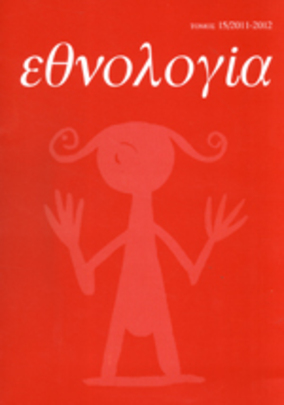Διήγησις έρωτος ανόμου και νομίμου : το παραμύθι για το κορίτσι που ο πατέρας του ήθελε να το πάρει (ΑΤ501Β)
Part of : Εθνολογία : περιοδική έκδοση της Ελληνικής Εταιρείας Εθνολογίας ; Vol.2, No.1, 1993, pages 201-244
Issue:
Pages:
201-244
Parallel Title:
reciting a story on illicit and legal love : the tale about a girl whose father wanted to marry her (AT510B)
Author:
Abstract:
This paper is a slightly revised translation of the paper presented at the Colloquium on semiotics and history at the 1983 ISISSS of the International Association for Semiotic Studies and published in Semiotica (1986, vol. 59-3-4 Special Issue: Signs of the past: Semiotics and history, pp. 347-369). The problem discussed relates to the father//daughter incest, a topic censured both in everyday and in ritual and/or official discourse, a social issue secluded in between the walls surrounding family and familial life in traditional Greek society. The fact that the same problem appears equally censured and/or hidden behind the walls of private life in modern- day contemporary society, Greek and other, shows that little has changed as regards the basic patriarchal structures of family and kinship and the fallocentric ideology surrounding gender and sexual relations.From this point of view the analysis of the tale type AT510B (according to A. Aame and S. Thompson international classificatory system), known in European narrative tradition under the title «Peau-d’Ane» or «Cup-o-Rushes», poses not only as a theoretico-methodological problem to the analyst, but also as a social issue relating to gender and sexual politics. Nonetheless, what is analysed here is only one aspect of the problem of fatheri/daughter incest («patriarchal incest») relating to the question of the existence of at least one narrative type where such incestuous relation take on the form of a marital union. The story is known as a variant of the Cinderella tale (Cinderella being AT510A) in that a wrong familial union is the starting point of the story which ends up with a proper marital union. However, the analysis proposed here shown otherwise.Indeed, the suggestion made is that formal and formalistic (such as, e.g. the morphological, semiotic or structural) types of analysis cannot deconstruct either the social meaning of such a story or the socio-political uses and/or abuses of such a discourse about social relations. Nonetheless, a combination of a socio-historical «reading» of the story with an in-depth content- and formal-semiotic analysis of the narrative structures shows that the mythological code transforms a transparent matter-of-fact description of a social problem into an opaque discourse on love and sex and on the ethics of the victimization of female family members as regards their sexuality. This displacement signifies the transference of a social problem into an ideological one by reproducing the domination of patriarchal order over and kind of order, even moral.The point deserves further analysis. However, the analysis proposed here may lead one to speculate that in certain social milieus incest as such cannot be discussed as a social problem; it is bypassed in mythological discourse as it was (and still is) suppressed in both ritualistic and everyday life. To my knowledge, AT510B (at least in its Greek versions) is the only case where father (or brother)//daughter incest is presented as a discursive subject - nonetheless in a socially determined (and «morally» fixed) way.
Subject:
Subject (LC):
Keywords:
ηθική, Ελλάς
Notes:
Περιέχει γλωσσάρι συμβόλων και όρων και βιβλιογραφία




